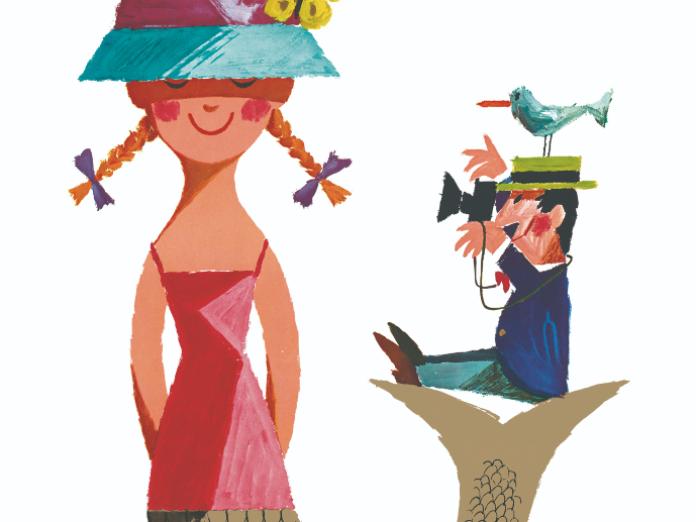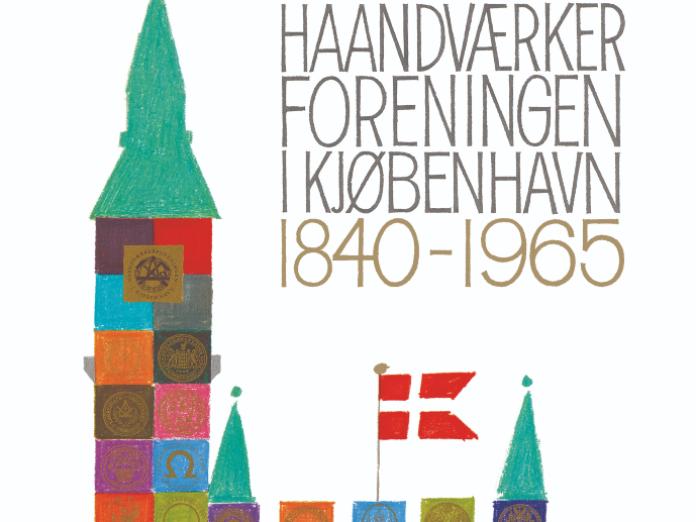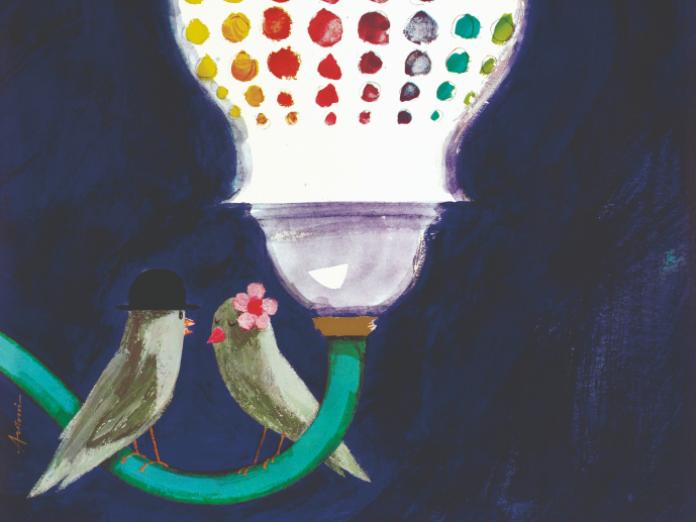Press Release: The Making of Wonderful Copenhagen – Poster artist Ib Antoni
The smiling mermaid and the friendly royal guard, drawn in aesthetic 60's strokes and colours. Motifs that many still associate with Denmark's capital. But who created these iconic motifs? Discover the incredible story of poster artist Ib Antoni, who was world-famous in the 50s-70s but whose name has since been forgotten. On the 50th anniversary of his death, the Museum of Copenhagen is showing an exhibition that goes behind the person Ib Antoni and his time. The exhibition includes both well-known works and never-before-exhibited original drawings and designs that helped put Denmark and Danish products on the world map.
‘Ib Antoni was an outstanding artist who had a knack for capturing Copenhagen's charm with his 60s-style colours. He opened the eyes of foreigners and our own to the city and its qualities. He succeeded at a time when there was not as much hype about Copenhagen as there is today. I look forward to exploring his works and his times in the exhibition at Copenhagen Museum,’ says Mayor of Culture and Leisure in Copenhagen, Mia Nyegaard (RV).

Known as "The Great Dane"
Ib Antoni (1929-1973) died tragically at the peak of his career as the world-famous advertising designer known as ‘The Great Dane’. He drew hundreds of iconic posters and was a member of a group cooperating with the Ministry of Foreign Affairs that executed a large-scale advertising campaign to sell Denmark and ‘Wonderful Copenhagen’ abroad. The campaign was a success, and tourists flocked to the Danish capital. Ib Antoni's posters hung in cities all over the world – from New York to Monte Carlo – and Antoni traveled the globe, working for the biggest advertising agencies in the world.
‘Ib Antoni was a very talented advertising designer from Esbjerg (an industrial harbour town in Jutland, ed.) who had a short, dramatic and very successful life. A clear and obvious talent’, says Per Arnoldi, artist and colleague of Ib Antoni.
Magic dust on the worn-out Danish capital
The Danish capital Ib Antoni encountered in the 1950s and the decades ahead was a city in rapid development, with a wealth of new housing and new businesses emerging – just not in the historic city centre and adjacent neighborhoods. Copenhagen had been largely spared the devastation of World War II, but the city's many 18th and 19th century houses, stately buildings and monuments were in disrepair. Even the Amalienborg Palace, the winter residence of the Danish Royal Family, was left with sooty and crumbling facades. It was this city that Ib Antoni had to help and beautify, so tourists could be attracted. In the exhibition, contemporary photographs show what the city looked like in contrast to his idealized fairy-tale images – images that are surprisingly closer to how visitors encounter the capital today.

The classics – and the unknown unique works
The exhibition is the first of its kind to show not only a wide range of Ib Antoni's production of posters and designs, but also the artist's process in the form of sketches and drawings, as well as letters and objects from the vaults that invite you into the mystery of who the man behind the works was. We step right inside the artist's studio and follow ideas from the first sketches on a napkin to the finished poster. See both posters that made it around the world and sketches that never left the drawing board. The works give an insight into a time after World War II when Copenhagen and Denmark had to be made ‘wonderful’ - even if life was not necessarily so.
The hidden treasure in the attic
Ib Antoni's drawings were hidden away in an attic for four decades, while his name was quietly forgotten. His death in 1973 in the tragic fire at the Hafnia Hotel – one of the biggest fires in Copenhagen after the war – meant that his life story and drawings were stored away in an attic. But on the initiative of his nephew Anton, the works came down from the attic in 2009 and together with gallerist Mikael Hauberg, the dream of reintroducing Ib Antoni's works to the world was born. In 2021, a cooperation between Antoni Legacy and journalist Sara Alfort brought Ib Antoni's story back to life in 2021 with the book ‘The Man Who Drew Denmark’, on which the exhibition is based.
In 2023, it will be the 50th anniversary of Antoni’s death, and The Museum of Copenhagen will be presenting an exhibition about the artist, his time and his drawings.
‘And his work is still spot on! That's what defines good art. Whether you driving in your car, cycling or walking; the message has to get through! Clear, visible, eye-catching. And Ib Antoni really knew how to do that. A giant name! No doubt about that. We’ve got to bring Ib back into the light!’ says Peder Stougaard, founder of the Danish Poster Museum.

From bakery bags to billboards
The story of Ib Antoni is the tale of the young Dane who – with a bit of a ‘Mad Men’ career on the continent and in New York – helped put Denmark on the world map with his creative mind and a sharpened pencil. It is the story of the impact he made and continues to make. About the artist who constantly pushed himself and was brave enough to show up unannounced at the biggest agencies in Europe and New York, but who was always afraid of his own inadequacy. About post-war Denmark, the celebrities of the time and about advertising as the new medium that shaped the modern consumer. It is also the incredible story of how Antoni's original drawings were hidden forgotten in an attic, and how they were rediscovered and brought back into the light.
The exhibition is a collaboration between the Copenhagen Museum and Antoni Legacy, which represents the artist and his works.
Further information:
Curator Regitze Søndergaard, The Museum of Copenhagen, ez4f@kk.dk or +45 4042 6458
Head of communication, Jesper Møller, The Museum of Copenhagen, d64b@kk.dk or +45 4019 7485